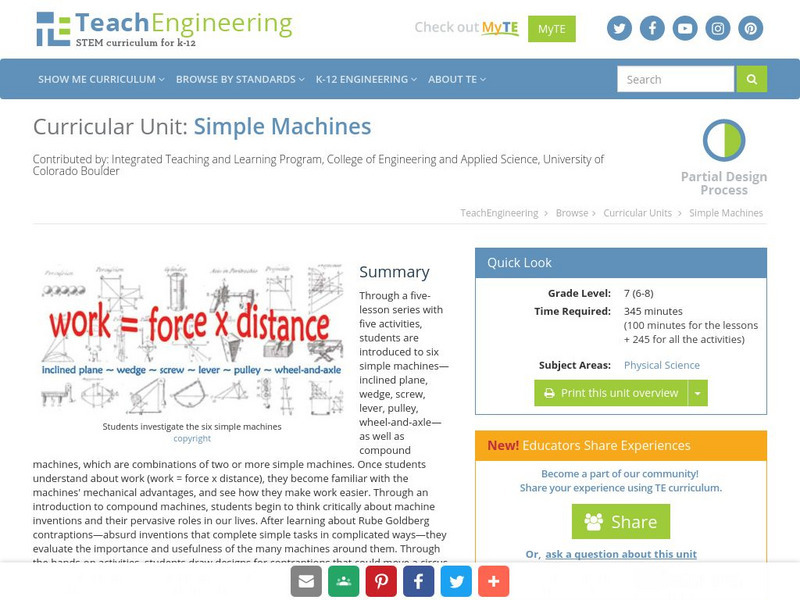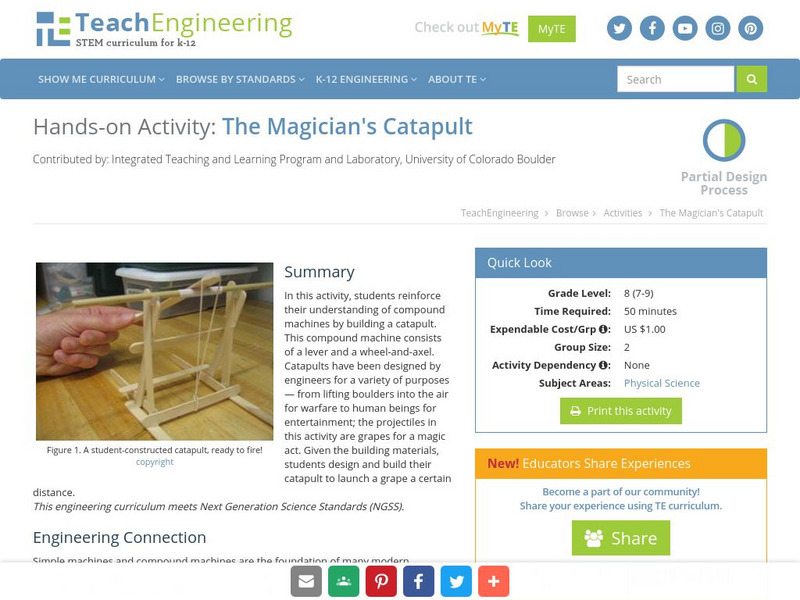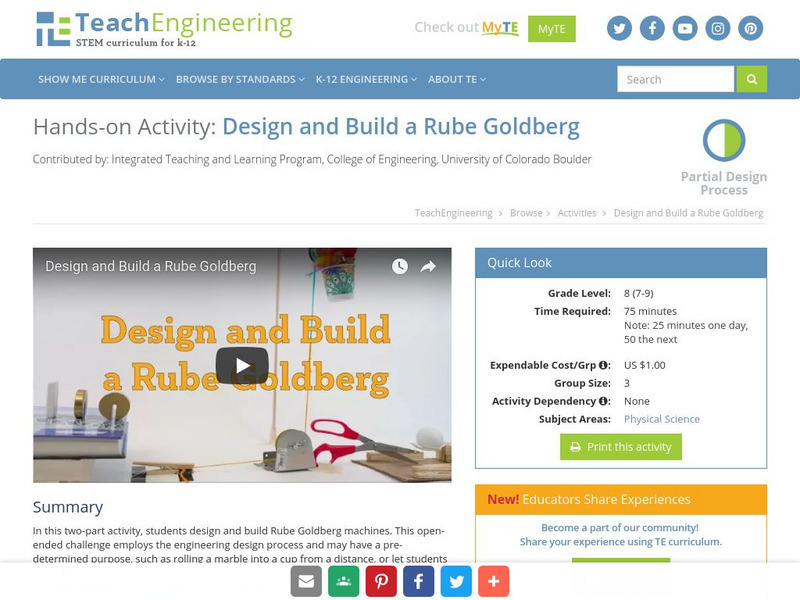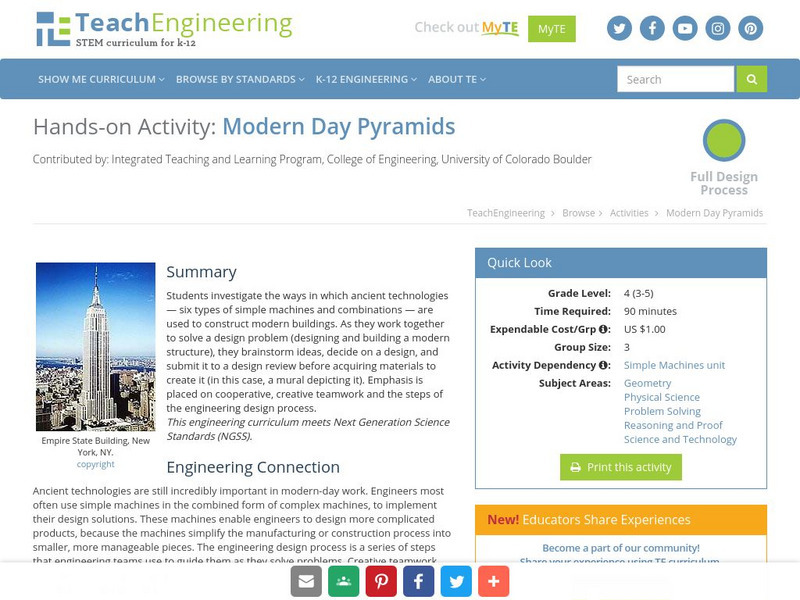Curated OER
Toy Tally One
Fifth graders explore simple machines. They examine toys and discover toys that are actually simple machines. Students share information, with the class, about their selected toy and how it works.
TeachEngineering
Teach Engineering: Not So Simple
Students expand upon their understanding of simple machines with an introduction to compound machines. A compound machine - a combination of two or more simple machines - can affect work more than its individual components. Engineers who...
TeachEngineering
Teach Engineering: Rube Goldberg and the Meaning of Machines
Simple and compound machines are designed to make work easier. When we encounter a machine that does not fit this understanding, the so-called machine seems absurd. In this lesson, the cartoons of Rube Goldberg are introduced and engage...
CK-12 Foundation
Ck 12: Physical Science: Simple Machines
[Free Registration/Login may be required to access all resource tools.] What a machine is, the three ways that machines make work easier and simple and compound machines.
TeachEngineering
Teach Engineering: Simple Machines
Through a five-lesson series with five hands-on activities, students are introduced to six simple machines - inclined plane, wedge, screw, lever, pulley, wheel-and-axle - as well as compound machines, which are combinations of two or...
TeachEngineering
Teach Engineering: The Magician's Catapult
In this activity, students reinforce their understanding of compound machines by building a catapult. This compound machine consists of a lever and a wheel-and-axel. Catapults have been designed by engineers for a variety of purposes -...
Museum of Science
The Museum of Science: Gadget Anatomy
This site from The Museum of Science presents some compound machines and asks students to identify which simple machines they are composed of. Students provide their answer and receive immediate feedback.
Alabama Learning Exchange
Alex: How to Make Something Simple, Hard
Students will have completed a unit of forces and motion prior to the current unit of study on simple machines (lever, inclined plane, screw, wedge, pulley, wheel and axle). Students will review the functions and examples of simple...
TeachEngineering
Teach Engineering: Design and Build a Rube Goldberg
In this two-part activity, students design and build a Rube Goldberg machine. The open ended problem uses the engineering design process and can have a preset purpose, such as rolling a marble into a cup from a distance, or can be left...
The Franklin Institute
Franklin Institute Online: Simple Machines
Information on all six simple machines, nicely presented with extra information available for all. Other sources available. Do "Try This Demonstration."
TeachEngineering
Teach Engineering: Modern Day Pyramids
Students investigate the ways in which ancient technologies - six types of simple machines and combinations - are used to construct modern buildings. As they work together to solve a design problem (designing and building a modern...
TeachEngineering
Teach Engineering: Simple Machines and Modern Day Engineering Analogies
Students apply the mechanical advantages and problem-solving capabilities of six types of simple machines (wedge, wheel and axle, lever, inclined plane, screw, pulley) as they discuss modern structures in the spirit of the engineers and...
Science Education Resource Center at Carleton College
Serc: Mn Step: Six Simple Machines: How They Combine to Form Complex Machines
For this activity, students predict which simple machines might be inside a small household appliance. They then take it apart to investigate, and record what they discover. In the process, they learn how simple machines are combined to...
Science Struck
Science Struck: Simple Machines: Pulley Systems
Describes some history of the pulley, how it works, the formula for calculating its mechanical advantage, types of pulley systems, and some applications of pulleys.
CK-12 Foundation
Ck 12: Physical Science: Pulley
[Free Registration/Login may be required to access all resource tools.] What a pulley is and the three basic types, and the mechanical advantage of a pulley.
Science Struck
Science Struck: Examples of Pulleys in Daily Life
Learn how pulleys work and their many uses in everyday life, industry, recreation, and other activities. Includes many pictures of pulleys and pulley systems.












